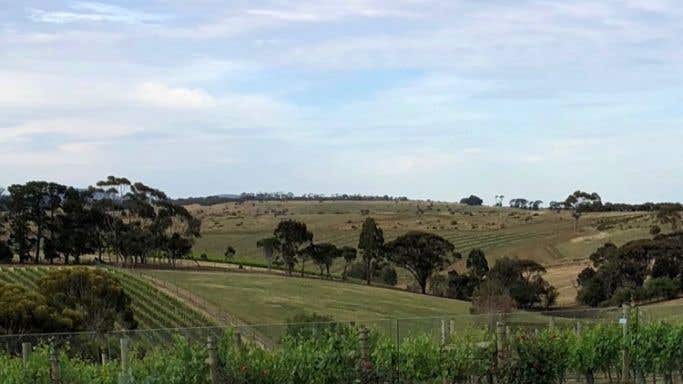A classy cool-climate Australian Chardonnay, not an oxymoron.
From 449 Swedish kronor, AU$72, €46.95, £49.99, SG$79, HK$500, $71.99
Cool-climate Chardonnay was celebrated last weekend in Niagara-on-the-Lake at the International Cool Climate Chardonnay Celebration, or iC4+. I was invited to give the keynote speech and, as part of my research, tasted rather a lot of cool-climate Chardonnays from around the world, including this beautifully complex and well-balanced one. (I’ll be reporting on the event and adding my notes to our tasting notes database in due course.)
You may not immediately think of Australia as a cool-climate region but as Brian Croser forcefully pointed out in Australian vineyards – not that hot actually, ‘Of Australia’s 65 official wine regions, 24 are as cool as or cooler than Bordeaux and that is counting the whole of Tasmania as one region, one of the 24.’ Not that Bordeaux is particularly cool at the moment, with heatwave temperatures reaching a record 41.2 ºC.
The fruit for the By Farr Chardonnay 2017 comes from the Farrs’ Sangreal site in Geelong, Victoria (above and top right), about 80 km south-west of Melbourne and at an elevation of 120 m (390 ft). The vines, now 25-years-old, are a mix of Dijon and Penfolds 58 clones planted on red soils over limestone, and significantly cooled by the maritime influence from Port Phillip Bay, as you can see from this World Atlas of Wine map of Victoria.
The winemaking is straightforward: hand-picked grapes are whole-bunch pressed then chilled and fermented at a relatively cool temperature by indigenous yeasts in French oak barrels, of which about 35% were new. The wine was stirred just to encourage malolactic conversion.
The barrel fermentation and the time on the lees has given the wine a creamy quality and a richness in the mouth but it is not an overtly oaky wine – though the oak does seems to give a spiciness on the palate – and what I particularly liked about it was the combination of generous fruit and the more subtle stony and fresh citrus aromas and flavours. It’s full-flavoured but without excess, totally mouth-watering and moreish: New World fruit intensity with cool-climate finesse. The alcohol is a moderate and balanced 13%.
You may baulk at the price but I think it’s good value compared with the equivalent quality from, say, Burgundy, even though it is very much its own style and not imitating any other region. (Garry Farr, pictured below with his son and partner in crime Nick, worked 10 vintages at Domaine Dujac, and Nick appears to be sporitng a Domaine Dujac T-shirt, so there's no doubt about the style of Chardonnay they admire.) Not an everyday wine, perhaps, but worth every penny or dollar. I scored it 17 out of 20 and reckoned it would age well until at least 2023, but it is already complex and delicious now.
This vegan-friendly wine is imported into the UK by Liberty Wines and is widely available in Australia and the UK as well as in the US, Sweden, Singapore, the Netherlands, Hong Kong, France and Denmark.





